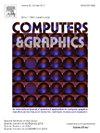Real-time indexing and visualization of LiDAR point clouds with arbitrary attributes using the M3NO data structure
IF 2.5
4区 计算机科学
Q2 COMPUTER SCIENCE, SOFTWARE ENGINEERING
引用次数: 0
Abstract
In previous work, we have presented an approach to index 3D LiDAR point clouds in real time, i.e. while they are being recorded. We have further introduced a novel data structure called M3NO, which allows arbitrary attributes to be indexed directly during data acquisition. Based on this, we now present an integrated approach that supports not only real-time indexing but also visualization with attribute filtering. We specifically focus on large datasets from airborne and land-based mobile mapping systems. Compared to traditional indexing approaches running offline, the M3NO is created incrementally. This enables dynamic queries based on spatial extent and value ranges of arbitrary attributes. The points in the data structure are assigned to levels of detail (LOD), which can be used to create interactive visualizations. This is in contrast to other approaches, which focus on either spatial or attribute indexing, only support a limited set of attributes, or do not support real-time visualization. Using several publicly available large data sets, we evaluate the approach, assess quality and query performance, and compare it with existing state-of-the-art indexing solutions. The results show that our data structure is able to index 5.24 million points per second. This is more than most commercially available laser scanners can record and proves that low-latency visualization during the capturing process is possible.

利用M3NO数据结构实现任意属性激光雷达点云的实时索引与可视化
在之前的工作中,我们提出了一种实时索引3D激光雷达点云的方法,即当它们被记录时。我们进一步介绍了一种名为M3NO的新型数据结构,它允许在数据采集期间直接对任意属性进行索引。在此基础上,我们提出了一种集成的方法,不仅支持实时索引,还支持带有属性过滤的可视化。我们特别关注来自机载和陆基移动地图系统的大型数据集。与离线运行的传统索引方法相比,M3NO是增量创建的。这支持基于任意属性的空间范围和值范围的动态查询。数据结构中的点被分配到细节级别(LOD),可用于创建交互式可视化。这与其他关注空间或属性索引、只支持有限的一组属性或不支持实时可视化的方法形成了对比。使用几个公开可用的大型数据集,我们评估了该方法,评估了质量和查询性能,并将其与现有的最先进的索引解决方案进行了比较。结果表明,我们的数据结构每秒能够索引524万个点。这比大多数商用激光扫描仪所能记录的要多,并证明了在捕获过程中实现低延迟可视化是可能的。
本文章由计算机程序翻译,如有差异,请以英文原文为准。
求助全文
约1分钟内获得全文
求助全文
来源期刊

Computers & Graphics-Uk
工程技术-计算机:软件工程
CiteScore
5.30
自引率
12.00%
发文量
173
审稿时长
38 days
期刊介绍:
Computers & Graphics is dedicated to disseminate information on research and applications of computer graphics (CG) techniques. The journal encourages articles on:
1. Research and applications of interactive computer graphics. We are particularly interested in novel interaction techniques and applications of CG to problem domains.
2. State-of-the-art papers on late-breaking, cutting-edge research on CG.
3. Information on innovative uses of graphics principles and technologies.
4. Tutorial papers on both teaching CG principles and innovative uses of CG in education.
 求助内容:
求助内容: 应助结果提醒方式:
应助结果提醒方式:


